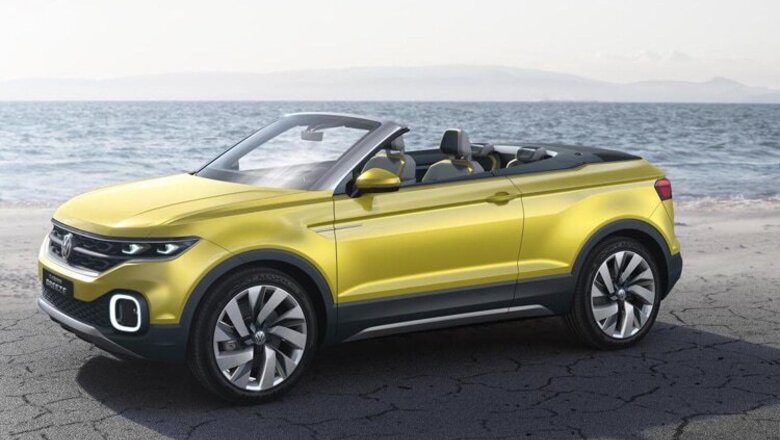
views
Volkswagen is using this year's Geneva Motor Show to start an aggressive move into the SUV market but also to commit to greener, cleaner forms of energy. And it all starts with the T-Cross Breeze, a convertible crossover that although a concept will soon morph into a real-world "Affordable, cheeky cabriolet," said VW Group's chairman, Dr Herbert Diess.
Based on the platform that will underpin the next VW Polo, the concept has a 2.565-meter wheelbase and uses an economical turbocharged 1-liter gas engine. It delivers 108bhp that is sent to the front wheels via a seven-speed dual clutch transmission for a 0-100km/h time of 10.3 seconds and a 188km/h top speed. Performance is not quick, but fuel efficiency is remarkable -- 5l/100km and 115g of CO2 per km.
"The T-Cross Breeze reflects the new start of our brand," said Klaus Bischoff, Head of Design for the Volkswagen Brand. "We want to stir enthusiasm for ‘New Volkswagen'."
But as well as fun off-roaders that showcase what car interiors will look like when switchgear has been usurped by touch screens, hand gestures and voice controls, Volkswagen is also using this year's show to address its issues regarding dieslegate. "2016 is the year when we intend to solve the problem with our diesel engines for our customers," said CEO Matthias Müller.
And, crucially to set an ambitious target -- to become the world's preeminent electric car manufacturer and to be at the vanguard of autonomous driving and of mobility services through the development of software.
"I am firmly convinced we will become a leading mobility provider by 2025," said Johann Jungwirth, VW Group's Chief Digital Officer. "We have already perfectly mastered the hardware -- in other words, how to build cars."
Volkswagen has nine models on sale that are either hybirds or plug-in electric and this number will grow to 20 by 2020. "All-electric ranges of over 500 km are feasible by the end of the decade. Charging will only take as long as a coffee break. And in the long term an electric car will cost less than a car with an internal combustion engine," Müller said.
However, battery innovation is nothing without a charging infrastructure. And that is why in the short term focus is on innovations within traditional internal combustion powerplants. "Our experts have developed fascinating technologies: from 3- to 16-cylinder engines, from natural gas to efficient diesel drives. And here, too, we can and will get even better," Müller said.
This ability to eke out greater and greater efficiencies from existing powertrains is also why the compnay's showcar has been given a 1-liter gas engine rather than a battry pack and set of electric motors.














Comments
0 comment